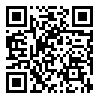Volume 3, Issue 4 (3-2017)
jhbmi 2017, 3(4): 251-258 |
Back to browse issues page
Download citation:
BibTeX | RIS | EndNote | Medlars | ProCite | Reference Manager | RefWorks
Send citation to:



BibTeX | RIS | EndNote | Medlars | ProCite | Reference Manager | RefWorks
Send citation to:
Tahmasbi H, Jalali M, Shakeri H. An Expert System for Heart Disease Diagnosis Based on Evidence Combination in Data Mining. jhbmi 2017; 3 (4) :251-258
URL: http://jhbmi.ir/article-1-163-en.html
URL: http://jhbmi.ir/article-1-163-en.html
Ph.D. in Computer Engineering, Assistant Professor, Computer Engineering Dept., Islamic Azad University of Mashhad, Mashhad, Iran
Abstract: (11505 Views)
Introduction: Coronary Artery disease is the most common type of heart disease and one of the leading causes of death in industrialized countries. The aim of this study was to design an expert system with high accuracy for Coronary artery disease diagnosis.
Methods: In this applied study, 14 features of 303 patients underwent coronary angiography were used. Dempster-Shafer theory of evidence combination was used to combine the results of three classifying methods including Decision Tree, K-Nearest Neighbor and Neural Network, in order to design a more accurate coronary artery disease diagnostic system. The data mining tool (Weka version 3.7) and C# in Net Framework environment were used for the implementation of model. The 10-fold cross-validation was used for the efficiency assessment.
Results: According to the results, mean accuracy, sensitivity, and specificity of the proposed system were 90.1%, 89.09% and 91.3% respectively. These values were higher in comparison with each of the participated classifiers in the combination. Moreover, in comparison to the similar studies, this method showed higher accuracy for the diagnosis of coronary artery disease.
Conclusion: The results of this research indicates that in the studied population, the proposed method has better accuracy in the diagnosis of coronary heart disease. This method, as an expert system, can help clinicians in making decisions, reducing clinical errors, improving the time to get a diagnostic through reducing waiting time and reducing unnecessary medical tests.
Methods: In this applied study, 14 features of 303 patients underwent coronary angiography were used. Dempster-Shafer theory of evidence combination was used to combine the results of three classifying methods including Decision Tree, K-Nearest Neighbor and Neural Network, in order to design a more accurate coronary artery disease diagnostic system. The data mining tool (Weka version 3.7) and C# in Net Framework environment were used for the implementation of model. The 10-fold cross-validation was used for the efficiency assessment.
Results: According to the results, mean accuracy, sensitivity, and specificity of the proposed system were 90.1%, 89.09% and 91.3% respectively. These values were higher in comparison with each of the participated classifiers in the combination. Moreover, in comparison to the similar studies, this method showed higher accuracy for the diagnosis of coronary artery disease.
Conclusion: The results of this research indicates that in the studied population, the proposed method has better accuracy in the diagnosis of coronary heart disease. This method, as an expert system, can help clinicians in making decisions, reducing clinical errors, improving the time to get a diagnostic through reducing waiting time and reducing unnecessary medical tests.
Keywords: Coronary artery disease, Expert system, Medical diagnosis, Dempster-Shafer theory, Classification
Send email to the article author
| Rights and permissions | |
 |
This work is licensed under a Creative Commons Attribution-NonCommercial 4.0 International License. |



